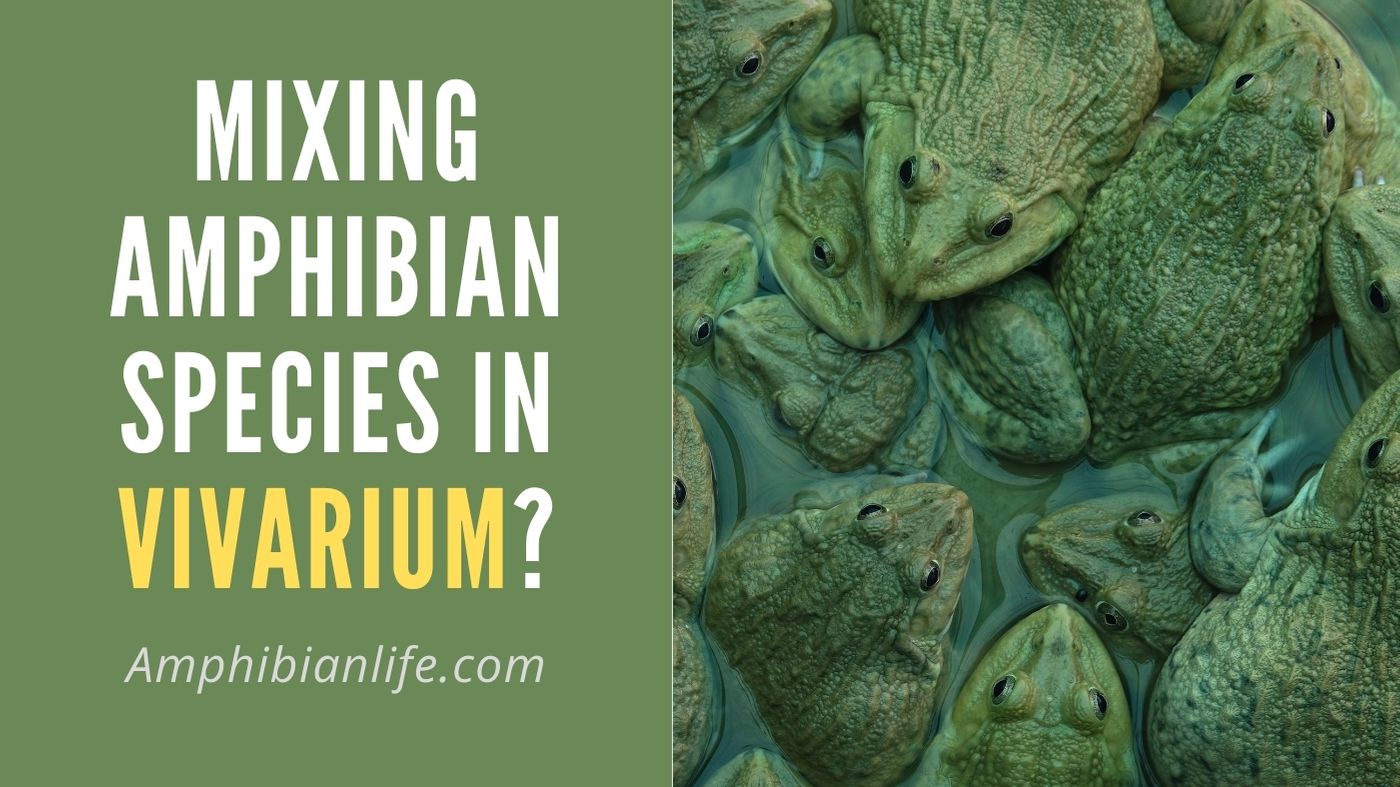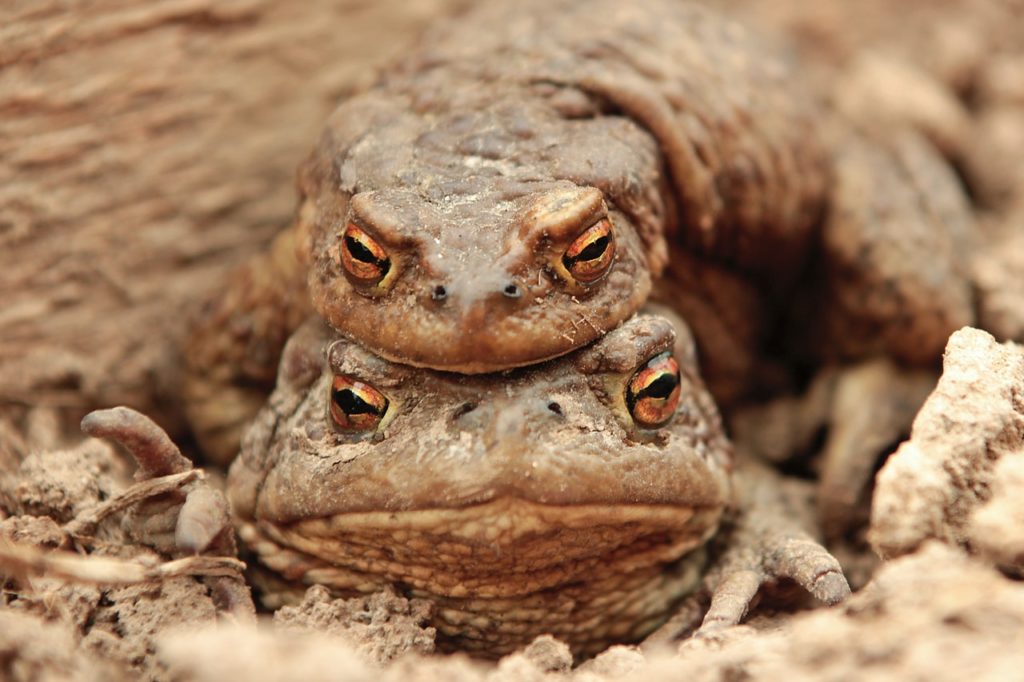
A lot of exotic pet enthusiasts have a very common question; Can we Mix Species in Vivarium?
can frogs live together? how about salamanders coexistence, can frogs, newts salamanders coexist?
Which Amphibian species can live together in harmony without hurting or consuming each other? What amphibians can coexist? can we house multiple species together? and this query list is big.
if you are looking for answers to similar questions you have come to the right place
Well it is pretty straightforward and A Big ‘NO’ for keeping Random amphibian species together.
We will be discussing about this in detail to enlighten and remove any misconceptions from your mind.so lets dive in.
What is Species Mixing? New World Syndrome
The title of this article is a reminder of the dangers of introducing foreign pathogens to new species or races.
In early 15th century European’s landed and started to colonize America.
They bring foreign pathogens, including smallpox and common cold, that Native Americans ere never exposed to.
Since, Native Americans had never developed any antibodies or natural resistance to these illnesses,
Major population got the infection and acts as a favorable host to new pathogen resulting in horrible deaths.
Smallpox and other illnesses were the primary cause of Native American declines from the 15th-18th century.
It was solely responsible for wiping out thousands of people in a very short period of time.
History has taught us a painful and devastating lesson about the foreign disease, the immune system, and the devastating result of introducing foreign pathogens to unexposed victims.
In fact, it’s worse as captive environments have restrictions in comparison to wild habitats, which allows microbes to multiply at a phenomenal rate.
Of course, there are many species that live in close proximity to other amphibian species, and in many cases housing such species together is okay.
What really causes health problems? is housing species from different habitats, environments and geological locations.
Additionally risks of foreign pathogen exposure, housing animals of incompatible size, disposition, acts as a recipe for disaster.
Some common mixed-species scenarios, why they are fatal to amphibians:

Housing Geologically isolated Species Together
Can different frog species live together?
Mostly, amphibians become ill in a mixed-species environment is due to introduction of foreign pathogens from anti species.
In the wild, species get exposure to local pathogens, such as bacteria, virus strains, fungi, and through evolution have developed natural resistances/immunities to them.
However, because these pathogens vary greatly from one location to another, the natural resistances developed by any particular species also vary greatly and are dependent on that species immediate wild habitat.
Again, the case of European invasion and the effect of European pathogens on Native Americans can be referenced.
For example, a newt from the United States, such as N. viridescen, develops resistance to different pathogens than a species from another environment, such as the Chinese Fire Belly newt, C. orientalis.
What is New World Syndrome?
A species carries the pathogens for which it has natural resistances, so its introduction with foreign species leads to transfer of harmful agents with new host species
which typically ends up in the illness or death of one or both due to their lack of natural resistances
Pet stores often house several salamanders, newts, and sometimes frog, species in one tank, which gives pet buyers an idea about their coexistence.
Unfortunately, these animals are often ill when purchased and die shortly after due to their mixed-species environment.
It is true that some have mixed certain species with no ill effects for several years, but it is very risky doing so, and not the behavior of responsible keepers.
It is also a common misconception that captive-bred species are exceptions to the rule, and we can house them with other amphibians species.
The fact is that animals are not sterile creatures, and even captive-bred species carry harmful pathogens.
Granted, captive-bred species are less likely to carry the same diseases and parasites as wild-caught, however, it’s still risky to house even captive-bred foreign species together.
Housing Newts with Fire-Belly Toads.
Can fire belly toads and newts live together?
Many pet stores and pet buyers house their newts with fire belly toads (Bombina spp.).
Aside from foreign pathogens, fire belly toads are aggressive eaters, and often injure small newts while lunging at food.
In fact, they are aggressive and territorial all the way around, and will most likely end up injuring small newts.
I have heard countless accounts of newts with wounds or missing limbs because of aggressive fire belly toads,
The consumption of newts by the toads, as well as cases of starvation as toads, are aggressive feeders that most passive newts never get any food.
Housing Fire Belly Newts with Eastern Newts.
Can Fire Belly Newts with Eastern Newts live together?
Although these newts are roughly the same size, require nearly the same captive habitats, and have the same peaceful disposition,
they are still from opposite sides of the globe and carry different pathogens for which the other has no resistances too.
Housing Newts with Tropical Fish
Can newts be kept with fish?
Without any prior know-how about which species are compatible with each other beginners usually newts purchase and throw them into tropical fish tanks, where they soon die and/or kill other members of the tank.
Their habitats simply are not compatible with each other. Tropical fish require warm water temperatures (72°F-86°F), and caudates require cooler water temperatures (62°F – 68°F).
Also, fishes have the tendency to nip at passive creatures, such as newts, and being poisonous, newts can kill them.
Finally, all newts require a land area of some sort even though they only barely use it around the year.
Housing Newts and Salamanders with Frogs
Can newts and frogs live together? Can frogs and salamanders live together?
Salamanders and most frogs are solitary creatures, and become stressed when forced to live closely with other species.
When salamanders are in stressful situation they often reject food, which leads to malnourished and starvation.
The same scenario is with for frogs. Some species are more aggressive than others, and will harm more passive species.
Many frogs require high temperatures (75°F-85°F), and caudate require cooler temperatures (62°F – 68°F).
And of course, foreign species carry different pathogens for which the other has no resistances too.
Housing Frogs, Salamanders, and Newts with Turtles
Turtles create an enormous amount of waste products for their size. This alone can lead to the illness of any amphibian. Turtles are also very aggressive feeders and could seriously injure a caudate while feeding, or simply consume the newt.
Most turtles will far surpass most amphibian species in size, which will lead to starvation of the amphibian, and injuries. Also, the aggressive behavior of turtles may stress the amphibians, causing them to reject food.
Other consideration when choosing tank mates
Aside from species mixing, there are other considerations when housing sympatric and conspecific species together.
Here sympatric refers to (different species from the same range) and conspecific means (same species).
We should consider each member based on the size, behavior, and disposition. Large individuals will dominate small ones, and sometimes pick on them and prevent them from getting any food.
All members housed together should be of roughly the same size to ensure one is not bullying the others.
Adults, juveniles, and larvae should be housed separately to avoid cannibalism.
Aggressive and territorial species should be given ample territory or should be separated.
Caudates of the genera Pachytriton and Paramesotriton, for example, grow rather large, are very aggressive and territorial, and can easily kill smaller members.
Pachytritons in particular are territorial and are known to fight to the death if not given enough territory.
What can we house with Newts, Salamanders, and Frogs?
Obviously, Amphibians live alongside animals in the wild and some organism species in their captive environment.
Conspecific and even sympatric species are generally kept together in spacious tanks.
Here sympatric means (keeping different species from the same range) and conspecific means (keeping only same species along).
Some species of aquatic and semi-aquatic amphibians will tolerate small guppies, white cloud minnows, ghost shrimp, or apple snails in their water area.
Keep in mind that fish can also introduce foreign pathogens that amphibians may be susceptible to. Also, keep in mind that the tolerance of fish varies from species to species.
Eastern Newts, N. viridescens, for example, are mostly aquatic in adulthood, but prefer fishless waters and will often reject waters will fish in them, even guppies.
More robust species, such as those of the genus Paramesotriton, on the other hand don’t mind a few guppies in their homes, and will even eat them.
Terrestrials can reside with earthworms, which are actually beneficial for soil terrariums, and may also provide food for larger amphibians.
Can frogs and newts coexist?
Yes They can but we don’t suggest it, Newts and Frogs can live along in harmony although both can eat each others’ tadpoles and even each in a wild and captive environment.
Can frogs and salamanders live together?
Separate them immediately.
There is no recommendation to keep any caudates in mixed-species tanks, with frogs, toads, newt or salamander tanks.
What fish can live with newts?
Guppies are best option if you want to keep them together, as newts are non likely to eat them overtime.
Can fish and salamanders live together?
salamanders are voracious animals and prefers to eat insects, brine shrimp and even small fish.
usually its not preferable, but if you want one, then keep smaller salamander species like tiger salamander or spotted salamander along with fish in the aquarium.
Can 2 Pacman frogs live together?
No, We shouldn’t keep Pacman Frogs Together, they are carnivorous ambush predators that eat anything they fit in their mouth; including its own species and other amphibians.
Can you put different frogs together?Can toads and frogs live together?
usually its a no for frogs and toads to get along as they can pass diseases and even prey on each other,
But Some frog species could live happily together in tank with communal harmony: below are some
- Waxy and other Green Tree Frogs.
- Barking-Tree Frogs.
- Grey Tree Frogs.
- White Lipped Tree Frog.
- Red-Eyed Tree Frogs.
What animals can live together vivarium?
Some Species that we can keep together in captive environments are as follows:
- Frilled lizards with Green Iguanas (one male per species)
- Box turtles and Radiated Tortoises in a large enclosure
- Some sub-species of tree frogs can live in harmony
- Firebelly Toad & Firebelly Newt (one male per species)
- Baby turtles and some smaller fish species.
- Terrestrial and Tree lizards having similar temperature requirements.
- Baby Guppies and Small Newts
- Green anoles, small day geckos, Tree frogs can live along with fire-bellied toads
- Tiger salamander or Spotted salamander along with Fish
- Aquatic and semi-aquatic amphibians with guppies, white cloud minnows, ghost shrimp, or apple snails.
For Further Reading
I hope you have learned a lot about which species to keep together and which ones not
it will help in protecting them from horrible death because of our misconceptions of mixing and lack of information.
below are some more relevant topics that are related to this one and you might find them interesting to read!
Here’s an interesting article Do salamanders really bite?
Here’s another interesting article are salamanders poisonous and dangerous for people?
